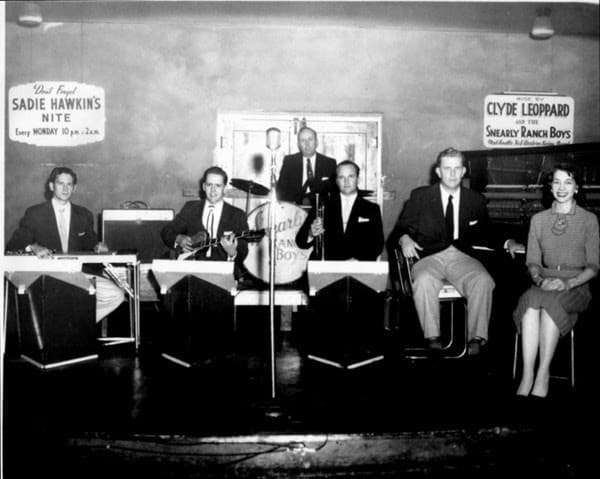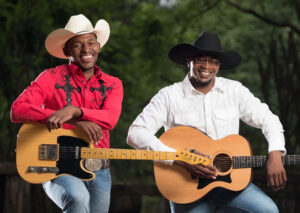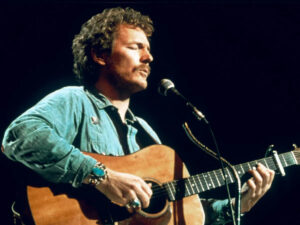The Snearly Ranch Boys
Editor’s Note:
Dr. Shawn Pitts lives in Selmer, Tennessee. Cinema fans may recognize Selmer as the County Seat of McNairy County, Tennessee. The film “Walking Tall” made McNairy County Sheriff Buford Pusser famous.
Dr. Pitts has served in many positions for the Tennessee Folklore Society including President. In addition, Pitts has written on music subjects for Southern Cultures at UNC, The Bitter Southerner, The Daily Yonder, and Salvation South, among other periodicals. Pitts has also served on the boards of Tennessee Arts Commission, Humanities Tennessee, the Tennessee Folklore Society, and the steering committee for the West Tennessee Blues Society. In 2019, he coproduced and contributed liner notes to the Bear Family Records release, “Discovering Carl Perkins” based on his research and digitization of the Stanton Littlejohn materials to be discussed in Part 2 of this Hillbilly Bop discussion.
This article by Pitts further illustrates the remarkable and complex history Country Music. This first installment deals with The Snearly Ranch Boys. A second installment, Part 2, will focus on Carl Perkins.
Outside of a few music historians, almost no one’s list of influential, Memphis musicians would include country artists. B.B. King, Elvis Presley, Howlin’ Wolf, Jerry Lee Lewis, Booker T. Jones, The Staple Singers or Three 6 Mafia? Certainly. The Snearly Ranch Boys or Starlite Wranglers? Who?
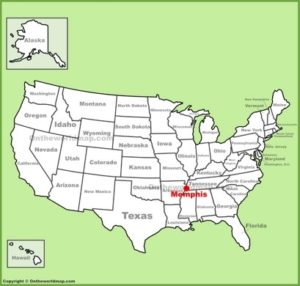
Memphis, Tennessee was never a commercial country music mecca—not like Nashville anyway—but the city produced more than a respectable crop of postwar hillbilly pickers alongside more well known blues and R&B artists. It also attracted an incredible number of aspiring artists from surrounding communities in rural West Tennessee, Mississippi and Arkansas who converged on a surprisingly lively country music scene.
Memphis clubs, like the Bon Air and Eagle’s Nest, among several others, catered to large crowds of honky tonk and western swing fans, while West Memphis, Arkansas—just across the Mississippi River—boasted the popular Cotton Club, as well as a number of busy gambling dens and other country music joints. Just as importantly, West Memphis’s WKEM radio regularly broadcast live hillbilly music shows, and barn-dance type jamborees to the sister cities and surrounding countryside.
The artists who performed in these venues were a combination of backwoods pickers who came to the Memphis area with diverse repertoires of vernacular music and hybrid country forms road-tested in the seedy honky-tonks, and their urban counterparts often influenced by R&B and boogie-woogie piano styles as well as the slick sound of western swing. The result was an infectious and deeply influential brand of regional country music, widely played and enjoyed by fans across the mid-South.
It was this environment that gave birth to popular bands like the Snearly Ranch Boys who performed electrifying lives sets in Memphis area clubs and served as the house band for WKEM. The Ranch Boys drew their name from a Memphis boarding house known as the Snearly Ranch, where many of their early members hung their hats and honed their musical chops. The Starlite Wranglers were a talented group of musicians with a similar sound and a shared history of blending a variety of country styles to the delight of Memphis hillbilly fans.
These two groups, and a vast number of individual artists who streamed into Memphis in search of wider audiences for their music, are largely responsible for putting the “billy” in rockabilly music—rock ’n’ rolls twangy antecedent. Together, they created a rich catalogue of Memphis music that formed the foundations for the earth shattering cultural revolution that emanated from the fabled studio at 706 Union Avenue. And It wasn’t just the considerable influence of these bands on the Sun recording artists who followed in their wake, many of the same musicians would become important Sun sessions players, if not Sun stars, in their own right.
If the Snearly Ranch Boys and Starlite Wranglers are unfamiliar to the average music fan, the names of the individual players will surely have a more familiar ring. Scotty Moore and Bill Black, primarily known to the world as two thirds of Elvis Presley’s first band, The Blue Moon Boys, were core members of the Starlite Wranglers. Moore was, in fact, the Wranglers’ bandleader and chief arranger. Black had done a short stint as the bassist for the Ranch Boys before joining Moore in the Wranglers. The group had cut a couple of original hillbilly sides for Sam Phillips before a Sun session with the future king of rock ’n’ roll permanently altered Moore and Black’s professional trajectories.
Black was a seasoned bassist who went on to front his own successful combo after the heady Sun days, but Moore’s guitar work with Elvis Presley—both at Sun and later RCA Victor—are arguably among the most consequential instrumental performances committed to record at the dawn of the rock ’n’ roll era. Moore and Black—country pickers both—are rightly considered key architects and founding fathers of rock ’n’ roll.
The name that eventually stuck to the sound Sam Phillips first captured that fateful day in July 1954 was rockabilly. At its core, it was an infectious interplay between Moore and Black’s high-energy, hillbilly style and Presley’s playfully ebullient vocal interpretation of Arthur “Big Boy” Crudup’s, “That’s Alright.” It was the blues, gliding effortlessly atop a wave of swinging honky-tonk rhythm. If it revealed anything, it was the artificiality of the long-accepted marketing categories for R&B (otherwise known as “race music”) and country music, which was primarily made by and for white audiences. It’s worth noting here that the B-side of That’s Alright was an uptempo, standard time cover of Bill Monroe’s, Blue Moon of Kentucky. In retrospect, the decision to back a blues side with a bluegrass number, performed in much the same style, hints at what was coming, but it’s clear that Phillips was still unsure what kind of tiger he had just grabbed by the tail. The answer wouldn’t be long in coming.
As for the Snearly Ranch Boys, the archives were not always crystal clear on the identities of every Sun session player, but between what was preserved, and the dedicated sleuthing of Sun historians, it can be comfortably stated that members of that band collectively played on more Sun sides than any other group of musicians. A steady turnover of Ranch Boy members that overlapped Sam Phillips’s most productive hit making period, produced an impressive number of quality musicians and vocalists. There is substantial evidence that from the time Phillips shifted his focus to the white artists who followed in Elvis Presley’s wake, the Ranch Boys were regarded as an informal Sun sessions band. Phillips leaned heavily on their deep, and ever-evolving, pool of musical talent for versatile, seasoned pros, capable of rounding out nearly any recording session.
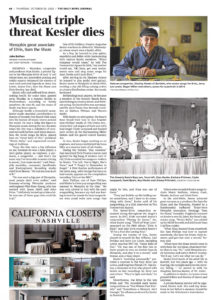 Stan Kesler, a gifted multi-instrumentalist and songwriter for the Ranch Boys, played on numerous Sun hits for the likes of Carl Perkins, Roby Orbison and Jerry Lee Lewis, even as he cowrote several of Elvis Presley’s earliest recorded tunes. Quinton Claunch, Johnny Bernero and Clyde Leoppard filled similar roles for Phillips in the studio, while Snearly Ranch veterans, Smokey Joe Baugh, Barbara Pittman, Warren Smith, and Jerry Lee Lewis made their own Sun sides with varying degrees of success.
Stan Kesler, a gifted multi-instrumentalist and songwriter for the Ranch Boys, played on numerous Sun hits for the likes of Carl Perkins, Roby Orbison and Jerry Lee Lewis, even as he cowrote several of Elvis Presley’s earliest recorded tunes. Quinton Claunch, Johnny Bernero and Clyde Leoppard filled similar roles for Phillips in the studio, while Snearly Ranch veterans, Smokey Joe Baugh, Barbara Pittman, Warren Smith, and Jerry Lee Lewis made their own Sun sides with varying degrees of success.
This is to say nothing of Rock ’n’ Roll Hall of Fame saxophonist, Ace Cannon, legendary sessions guitarist, Reggie Young, or Stax Records cofounder, Jim Stewart who all took turns as a Snearly Ranch Boy. All told, the Ranch Boys probably had more than thirty musicians come through their ranks between 1950 and 1960. Several of them recalled, on any given weekend, there might be two or three bands performing under the Snearly Ranch name at nightclubs across the mid-South. That’s certainly a testament to the group’s popularity in its heyday, but the lasting impact of the historic recordings at Sun, Records combined with the later accomplishments of group members, make an almost forgotten, Memphis hillbilly band among the most influential forces in the development popular music.

